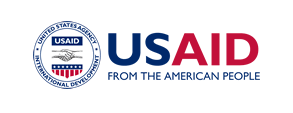The Health Policy Project ended in 2016. Work continued under Health Policy Plus (HP+) until 2022.
NEWS & VIEWS
.jpg)
Patience Mapfumo, 37, from Zimbabwe, with her five-year-old son Josphat who was born HIV free. Patience explains “When I became pregnant with Josphat I took a routine HIV test and found out I was positive. I enrolled in the PMTCT (Prevention of Mother-to-Child Transmission) programme but I kept my status a secret. "A PMTCT counsellor introduced me to a support group of other HIV- positive mothers who helped me to understand my illness. I realised I wasn’t alone and that my baby didn’t have to be born HIV-positive. I have since been blessed with an HIV free son." Words and pictures supplied by the Elizabeth Glaser Pediatric AIDS Foundation, which is partly funded by the UK Government.
Posted February 19, 2015
By Biyi Adesina, Avenir Health, Chukwuma Anyaike, Ministry of Health, Nigeria, and Sara Bowsky, Health Policy Project/Futures Group
This piece was originally posted on the Center for Global Health Policy's Science Speaks blog: http://sciencespeaksblog.org/2015/02/18/option-b-in-nigeria-new-study-supports-provision-of-lifelong-antiretroviral-treatment-for-pregnant-women-with-hiv/.
According to a 2013 UNAIDS report, Nigeria has a higher number of children contracting HIV than any other country in the world; nearly 60,000 were infected with the virus in 2012. As Nigeria begins planning for a revised national AIDS strategy this year, a new study, led by the USAID- and President’s Emergency Plan for AIDS Relief-funded Health Policy Project, offers insight for the country to eliminate HIV among newborns. This can be achieved by updating and investing in clinical protocols for HIV-positive pregnant and lactating women across the 13 states that collectively account for 70 percent of Nigeria’s mother-to-child transmission burden.
Ensuring that no baby is born with HIV is an essential step toward achieving an AIDS-free generation. A clinical intervention known as “prevention of mother-to-child transmission of HIV” has lowered new infection rates among newborns to nearly zero in many of the world’s developed countries. Nigeria’s current national PMTCT guidelines and clinical protocols use an approach known as “Option B,” which provides antiretroviral therapy to HIV-positive pregnant and lactating women, allowing HIV-free newborns. Under Option B, however, a woman’s duration on antiretroviral therapy depends on certain biomarkers, including CD4 count. As such, some women discontinue the medication, only to restart when their CD4 count drops below a certain level.
The HPP study assessed the costs and benefits of different treatment options (the baseline treatment currently offered in Nigeria, Option B, and Option B+) to scale up PMTCT in Nigeria’s 13 high HIV-burden states. The analysis found that Option B+ is the most cost-effective path to success in Nigeria, and provides policymakers with information on the resource requirements and benefits (in terms of new infections averted) of achieving state-level targets.Newer protocols recommend that lifelong antiretroviral therapy be provided to all pregnant women living with HIV, regardless of CD4 count. This protocol, known as “Option B+,” is less complex and more efficient than Option B. Option B+ requires increased antiretroviral therapy financing throughout a mother’s life (as well as the accompanying clinical monitoring), but ultimately saves the lives of women of reproductive age and their children.
To implement Option B+ in the 13 states as part of its national strategy, Nigeria would have to mobilize an additional 3.5 billion naira (US$18 million).
While PMTCT’s primary purpose in any setting is prevention of vertical HIV transmission, its benefits also carry over to the adult population, primarily in the form of reductions in partner-to-partner transmission. When the number of adult infections averted is added to the number of vertical infections averted, Option B+ is seen to be more effective than Option B.
Cost per infection averted is a key factor in assessing cost-effectiveness, which is an important criterion for policymakers when deciding among various treatment options. HPP’s analysis found that Option B+ is more cost-effective (N5 million/US$31,000 per infection averted) than Option B (N7.9 million/US$44,000 per infection averted). Therefore, policymakers can expect Option B+ to have the greatest impact on reducing incidence rates and saving lives.
An important caveat to HPP’s analysis is that it assumes the necessary infrastructure and human resource capacity are available to support estimated patient volume and achieve the level of scale-up needed to meet goals. It also assumes that investments have been made to expand access and service delivery, including hiring new clinical providers, constructing new facilities, renovating existing clinical facilities to serve larger patient volumes, and refurbishing warehouses and distribution centers to handle larger volumes of medicines.
When comparing total implementation costs across all scenarios, Option B+ is most expensive. However, when incremental costs are compared, Option B+ is only slightly more expensive than Option B. The results clearly indicate that Option B+ is more cost-effective in eliminating mother-to-child transmission of HIV in Nigeria. Benefits include a greater reduction in postpartum and infant infection via breastfeeding, due to the greater probability of mothers’ viral suppression while on antiretroviral therapy; a reduced treatment management and tracking burden, because women will already be established in the antiretroviral therapy program; a reduction in partner-to-partner transmission; and a greater number of lives saved. As Nigeria moves toward scaling up adult HIV treatment, adopting Option B+ is a critical component of achieving universal access to treatment by 2020.
What's New
- Something to Build On: “Innovation Exchange” Celebrates the Health Policy Project’s Close and a New Beginning
- What Will it Take for Tanzania to Achieve ART Targets and Ensure Long-Term Sustainability of the HIV Response?
- Helping Kenya’s County Leaders Advocate for Increased Health Investments
- HPP Holds Working Meeting on Ensuring Responsible PEPFAR Transitions for Key Populations
- Health Policy Project Celebrates 2016 International Women's Day
- HPP Staff Participate in White House Conference on HIV Stigma Reduction

